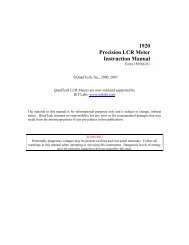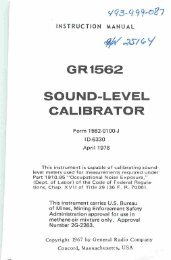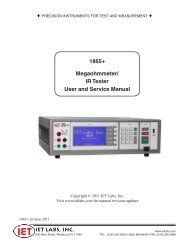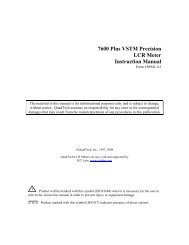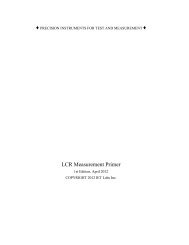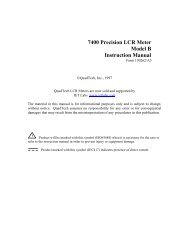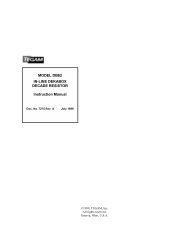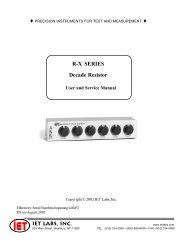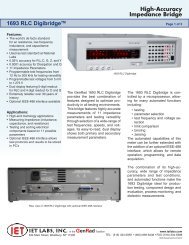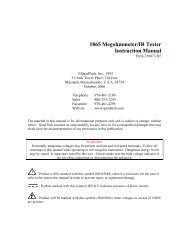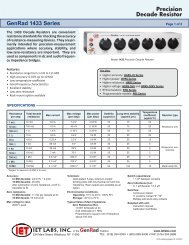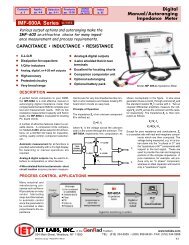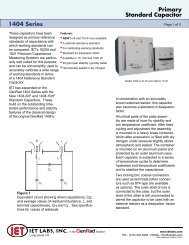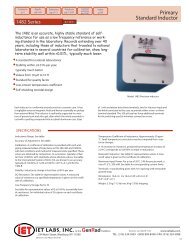Handbook of High Speed Photography - IET Labs, Inc.
Handbook of High Speed Photography - IET Labs, Inc.
Handbook of High Speed Photography - IET Labs, Inc.
Create successful ePaper yourself
Turn your PDF publications into a flip-book with our unique Google optimized e-Paper software.
section 6<br />
MOTION-PICTURE<br />
PHOTOGRAPHY<br />
6.1 USE OF A MOVIE CAMERA.<br />
It is <strong>of</strong>ten desirable to have more information about the subject<br />
than can be obtained from a single or multiflash exposure, particularly<br />
when the subject "doesn't get out <strong>of</strong> the way <strong>of</strong> itself" for successive<br />
exposures, as described in Section 1.3. In such cases, a motion picture<br />
<strong>of</strong> the event may supply this information. A movie is merely a series <strong>of</strong><br />
still pictures taken at different instants in time. The movie camera<br />
just allows these still pictures to be taken in succession, more rapidly<br />
than is possible with a roll or cut-film camera. The advantages <strong>of</strong><br />
stroboscopic illumination for motion pictures are similar to those for<br />
photography, and most <strong>of</strong> the techniques and considerations discussed<br />
in the foregoing sections apply equally to both photographic methods.<br />
The type <strong>of</strong> camera to be employed will depend upon the nature<br />
<strong>of</strong> the event. In general, a conventional movie camera may be used to<br />
photograph repetitive subjects, such as rotating or vibrating parts, re<br />
gardless <strong>of</strong> the subject speed. A high-speed movie camera must be<br />
used to photograph transient events, such as projectiles in flight or<br />
destructive processes.<br />
6.2 CONVENTIONAL MOVIE CAMERAS.<br />
The ability <strong>of</strong> the stroboscope to act as an electrically operated<br />
high-speed shutter makes it useful with any full-shutter movie camera<br />
including the least expensive amateur models, even where there is no<br />
camera-strobe synchronization. Best results are obtained when the<br />
stroboscope's flash rate is many times the camera framing rate (six<br />
times the framing rate or more). Lower flash rates will result in inten<br />
sity flicker or blank or partically masked frames. A disadvantage <strong>of</strong><br />
the unsynchronized technique is that exposure can only be determined<br />
by trial and error.<br />
58



